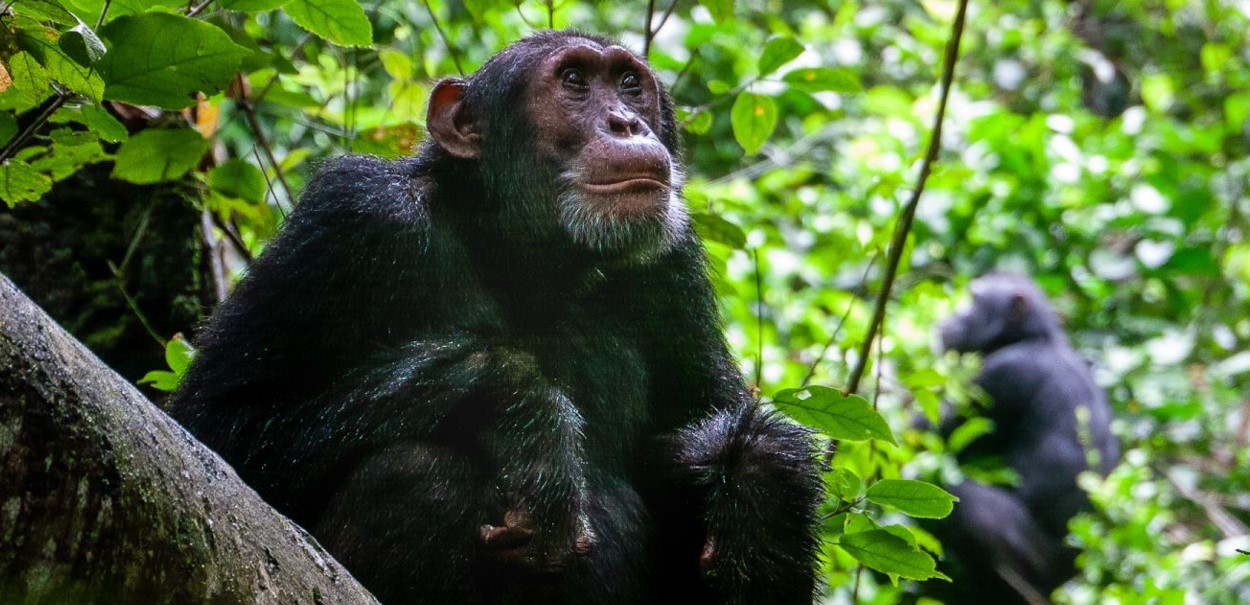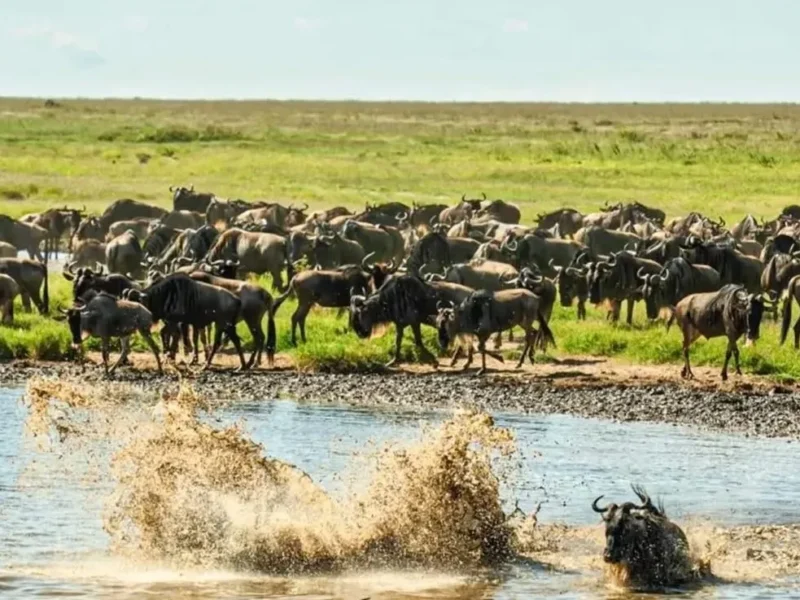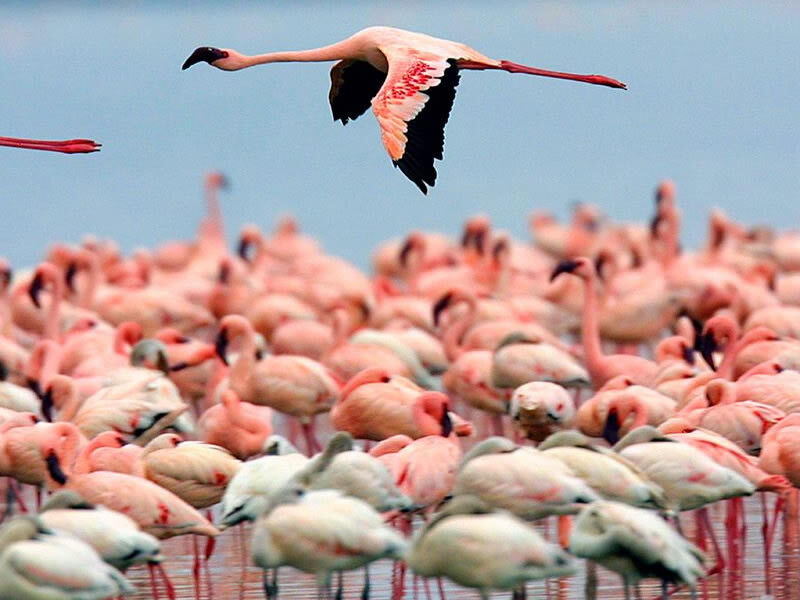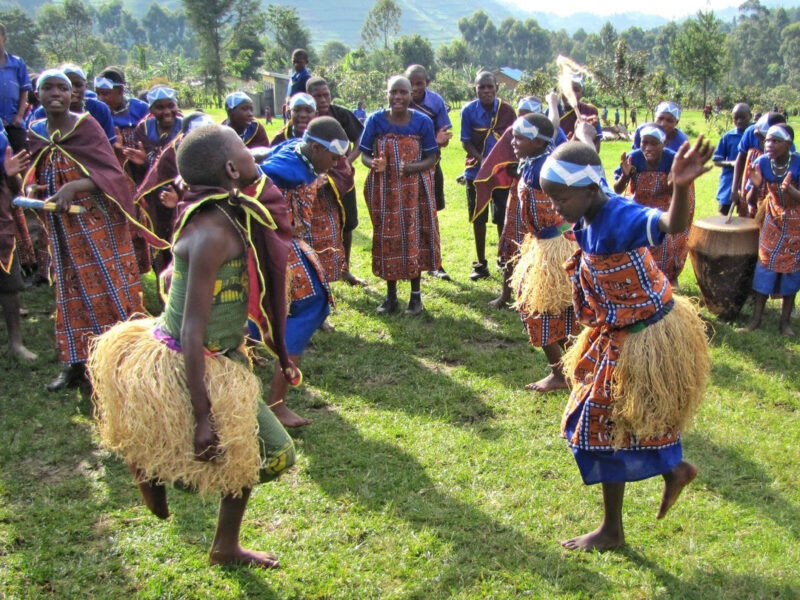
Tourism in Tanzania: A Gateway to Natural Wonders and Cultural Riches.
April 7, 2025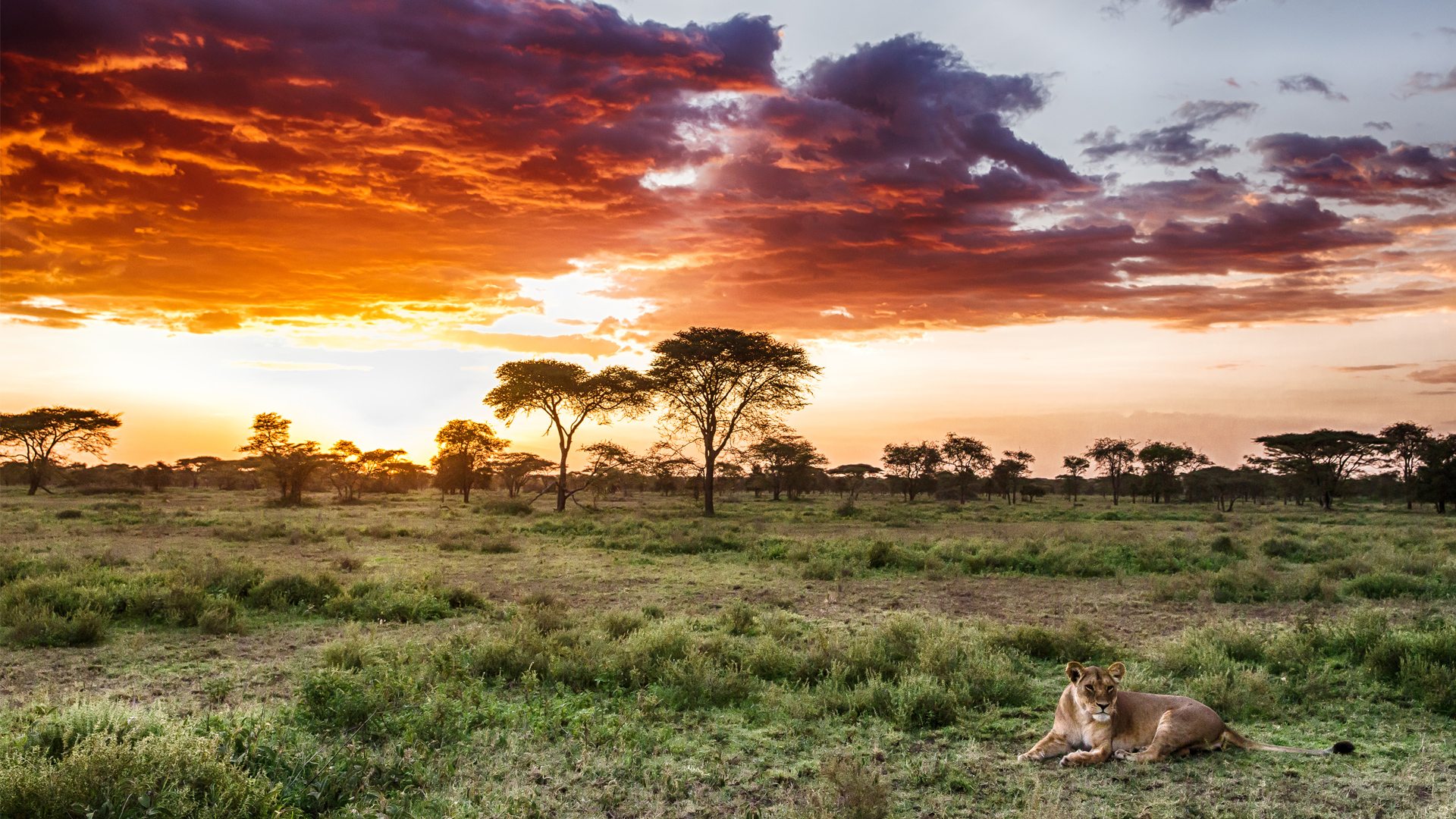
Serengeti National Park Tanzania
April 10, 2025Chimpanzees In the pearl
Sure! Chimpanzees in Uganda are a vital part of the country’s wildlife and ecosystems. Uganda is one of the best places in the world to see wild chimpanzees, as it is home to about 5,000 of these amazing creatures, roughly half of the world’s population
Here are some key points about chimpanzees in Uganda:
Habitats: Chimpanzees in Uganda can be found primarily in tropical rainforests and woodlands. The key locations to see them include:
1. Kibale National Park:
Known as the “primate capital of the world,” Kibale is one of the best places for chimpanzee trekking. It hosts a large population of chimpanzees and offers visitors a chance to see them up close. Chimpanzees in Kibaale National Park, located in southwestern Uganda, are part of one of the most important populations of wild chimpanzees in East Africa. Kibaale is known for its rich biodiversity and is one of the top places in Uganda to see chimpanzees in their natural habitat. Here’s a broad overview of chimpanzees in this region: Chimpanzee Population: Kibaale is home to one of the largest populations of chimpanzees in Uganda, with an estimated 1,000 individuals living in the park. These chimpanzees are part of the broader East African subspecies (Pan troglodytes schweinfurthii), which are distinguished by their large size and relatively long arms.
Behavior: Chimpanzees in Kibale are known for their social structure, with troops consisting of several individuals led by a dominant male. They are highly intelligent and use tools, such as sticks, to extract termites or honey from beehives. Chimpanzees are omnivores and eat a wide variety of foods, including fruit, leaves, insects, and occasionally meat.
Conservation Efforts: The chimpanzee population in Kibale faces threats such as habitat loss due to agricultural expansion, poaching, and human-wildlife conflict. Conservation programs have been put in place, including community-based initiatives, research projects, and eco-tourism to raise awareness about the importance of protecting chimpanzees and their environment.
Tourism and Research: Kibale offers chimpanzee trekking, where visitors can hike through the forest and observe chimpanzees in the wild. The Kibale Chimpanzee Project, run by researchers, has been instrumental in studying the behavior and conservation of chimpanzees in the area.
In summary, Kibale National Park is a significant stronghold for chimpanzees in Uganda. The park’s dense forest offers a safe and natural environment for these fascinating creatures, but their survival depends on continued conservation efforts to mitigate threats.
2.Kyambura Gorge (Queen Elizabeth National Park): The gorge is home to a small population of chimpanzees that are often encountered on trekking tours. Chimpanzees in Kyambura Gorge, located in the Queen Elizabeth National Park in western Uganda, represent a smaller but unique population of wild chimpanzees. Kyambura Gorge is sometimes referred to as the “Valley of Apes” due to the presence of these fascinating primates. Here’s a broad overview of the chimpanzees in Kyambura Gorge:
Habitat Kyambura Gorge is a 16-kilometer long and up to 100-meter deep gorge within Queen Elizabeth National Park, which is famous for its diverse ecosystems, including savannahs, wetlands, and tropical rainforests. The gorge itself is an area of forest, surrounded by savannah and grasslands, and it offers a somewhat unique environment compared to other chimpanzee habitats in Uganda. The lush forest provides ample food and shelter for the chimpanzees, though the area is more limited in size compared to other large chimpanzee habitats like Budongo or Kibale.
Chimpanzee Population
The chimpanzee population in Kyambura Gorge is relatively small compared to other national parks and reserves, with estimates suggesting around 40 to 60 chimpanzees living in the gorge. These chimpanzees are part of the same East African subspecies (Pan troglodytes schweinfurthii), and they occupy the gorge’s forested areas, where they are relatively secluded from human activity. Behavior and Social Structure Kyambura Gorge’s chimpanzees display typical chimpanzee behavior, with strong social bonds within their groups. Chimpanzees in this region, like in other parts of Uganda, live in large communities led by a dominant male, though some of the groups in Kyambura are smaller than those in other areas due to the limited size of the habitat. These chimpanzees are also highly intelligent, using tools like sticks to forage for termites and honey, and they communicate with a range of vocalizations, including calls, screams, and hoots. They also display complex social behaviors, such as grooming and cooperative hunting.
Diet and Feeding The diet of Kyambura’s chimpanzees is primarily fruit-based, with the gorge’s forest providing a variety of fruiting trees. In addition to fruits like figs, they also consume leaves, flowers, and occasionally small vertebrates such as monkeys or bush pigs. The dense forest allows them to forage effectively, though their food sources can be limited depending on the season, making their diet more dependent on the availability of fruit at any given time.
Conservation and Threats
The chimpanzees in Kyambura Gorge face a range of conservation challenges. As a small, isolated population, they are particularly vulnerable to habitat loss due to deforestation, agricultural expansion, and human settlements on the outskirts of Queen Elizabeth National Park. Poaching and human-wildlife conflict (such as crop-raiding) also pose risks to the chimpanzee population. Furthermore, the gorge’s size limits the ability of the chimpanzees to move freely, which can lead to inbreeding and a decline in genetic diversity.
Despite these challenges, Kyambura Gorge is part of Queen Elizabeth National Park, which is a UNESCO-listed biosphere reserve, and there are ongoing conservation efforts to protect the wildlife in the park, including the chimpanzees. These efforts include anti-poaching patrols, habitat restoration, and the promotion of eco-tourism to raise awareness and provide financial support for conservation activities.
Eco-Tourism and Research Kyambura Gorge is a popular site for chimpanzee trekking, where visitors can hike down into the gorge and observe the chimpanzees in their natural habitat. The trekking experience is an exciting way for tourists to witness chimpanzees in the wild and learn about their behavior and the challenges they face. The trekking also supports local economies and helps fund conservation activities. The Kyambura Gorge Chimpanzee Project is also involved in research on chimpanzee behavior and conservation, working to monitor the health of the chimpanzee population, study their social dynamics, and understand their feeding habits. This research helps inform conservation strategies not just for Kyambura but for other chimpanzee populations across Uganda.
Community Involvement Conservation in Kyambura Gorge is closely linked to the involvement of local communities. Many of the park’s conservation efforts focus on educating local residents about the importance of preserving the forest and its chimpanzee population. Involving communities in eco-tourism, sustainable farming practices, and wildlife protection programs helps reduce human-wildlife conflict and promotes a mutually beneficial relationship between the park and surrounding areas.
To summarize with, Chimpanzees in Kyambura Gorge are a small but important population of this iconic species. The gorge offers a unique environment that supports chimpanzee populations, but the challenges of habitat fragmentation and human encroachment are significant. Conservation efforts, including eco-tourism, research, and community engagement, are essential to ensuring the survival of chimpanzees in Kyambura Gorge and maintaining the integrity of their forest home. Despite its small size, Kyambura remains one of the best places to see chimpanzees in their natural environment, and it plays a key role in Uganda’s chimpanzee conservation landscape.
3.Budongo Forest Reserve: Situated in western Uganda, Budongo Forest Reserve is an excellent destination for observing chimpanzees. The area is renowned for its dense rainforest and rich biodiversity. Chimpanzees in Budongo Forest Reserve represent an important population of wild chimpanzees, offering valuable insights into their behavior and conservation. Budongo is one of Uganda’s largest and most significant forest reserves and plays a crucial role in chimpanzee conservation. Here’s an overview of the chimpanzees in Budongo Forest Reserve:
Habitat Budongo Forest Reserve is a tropical rainforest that spans approximately 825 square kilometers (318 square miles) within the Albertine Rift Valley. The forest provides a perfect habitat for chimpanzees, with diverse vegetation that includes mature trees, thick undergrowth, and numerous fruit-bearing plants that meet the chimpanzees’ dietary needs.
Chimpanzee Population Budongo is home to one of Uganda’s largest chimpanzee populations, estimated at around 600 to 800 individuals. The chimpanzees in Budongo belong to the East African subspecies (Pan troglodytes schweinfurthii) and are a vital part of the forest’s ecosystem.
Behavior and Social Structure Chimpanzees in Budongo live in large, complex social groups that can exceed 100 individuals. The social structure involves males competing for dominance, while both males and females form alliances. These chimpanzees are highly intelligent and skilled in using tools such as sticks to extract termites or honey and rocks to crack nuts. They communicate using a variety of vocalizations and gestures.
Diet and Feeding Habits The chimpanzees in Budongo are omnivorous, with a diet that includes fruit, especially figs, which are abundant in the forest. They also consume leaves, insects, and occasionally small vertebrates like monkeys. The forest’s biodiversity provides ample food sources for the chimpanzees.
Conservation and Threats Chimpanzees in Budongo face several threats, including habitat loss due to agriculture, logging, and human encroachment. Additionally, poaching and the illegal pet trade remain significant concerns. However, Budongo Forest Reserve has benefited from dedicated conservation efforts, including anti-poaching patrols, habitat restoration, and eco-tourism initiatives that engage local communities in chimpanzee protection.
One critical aspect of conservation in the region is the Budongo Conservation Field Station (BCFS), which conducts long-term research on chimpanzee behavior and ecology while also focusing on community-based conservation efforts. Research here has greatly expanded our understanding of chimpanzees, including their social dynamics, diet, and communication methods.
Eco-Tourism and Research Budongo Forest is a popular spot for chimpanzee trekking, where visitors can hike through the forest and observe the chimpanzees in their natural habitat. Tourists often get to witness their social interactions, feeding habits, and use of tools. The reserve also attracts researchers studying chimpanzee behavior, ecology, and conservation, contributing to the development of effective conservation strategies in Budongo and elsewhere.
Education and Community Involvement Successful chimpanzee conservation in Budongo depends on local community involvement. Conservation programs in the area emphasize community education and engagement, demonstrating the benefits of protecting chimpanzee populations and their forest habitat. Sustainable practices such as eco-tourism provide economic incentives for local communities while helping safeguard the forest. In Summary Budongo Forest Reserve is a vital conservation area for chimpanzees in Uganda. The reserve offers an ideal habitat for chimpanzees to thrive, although challenges such as habitat destruction and poaching persist. Continued research, conservation efforts, and community involvement are essential to ensuring the survival of chimpanzees in Budongo and the surrounding areas. It remains one of the best places to observe chimpanzees in the wild and gain deeper insight into their behavior and ecology.
4.Murchison Falls National Park: Although famous for its stunning waterfalls and large populations of elephants and lions, Murchison Falls National Park is also home to chimpanzees in the Budongo Forest.
Behavior and Social Structure Chimpanzees are highly social animals. They live in large communities that can include anywhere from 20 to 150 individuals. They are known for their intelligence, use of tools, and complex communication systems. In Uganda, you’ll often see them using sticks to extract termites from mounds, or rocks to crack open nuts. They also have diverse vocalizations, such as grunts, hoots, and screams, to communicate within the group.
Conservation Challenges Chimpanzees in Uganda face several threats, including:
Habitat loss: Deforestation, largely due to agriculture, logging, and human settlement, is a major issue.
Poaching: Though protected by law, chimpanzees can still fall victim to poaching, either for bushmeat or for the illegal pet trade.
Disease: Human diseases, like respiratory infections, can spread to chimpanzee populations.
Human-wildlife conflict: As human populations grow and expand, chimpanzees sometimes come into conflict with people over land use. Conservation Efforts Uganda has several conservation programs aimed at protecting chimpanzees:
Tourism: Ecotourism, including chimpanzee trekking, helps raise awareness and funds for conservation while also giving locals economic benefits.
National parks and reserves: Places like Kibale and Budongo are protected areas, and efforts are in place to strengthen enforcement of anti-poaching laws.
Community involvement: There are initiatives to involve local communities in conservation, reducing human-wildlife conflict and providing alternative livelihoods that don’t harm the forests.
Chimpanzee Trekking Uganda has become a prime destination for chimpanzee trekking, similar to gorilla trekking. Guided treks into the forest give visitors a chance to observe wild chimpanzees in their natural environment. It’s an incredible experience, where trekkers can see them play, forage for food, or interact with each other in the forest.
In short, Uganda plays a crucial role in the conservation of chimpanzees. It’s a place where you can not only witness the beauty of these intelligent primates but also contribute to the ongoing efforts to protect them in the wild.

